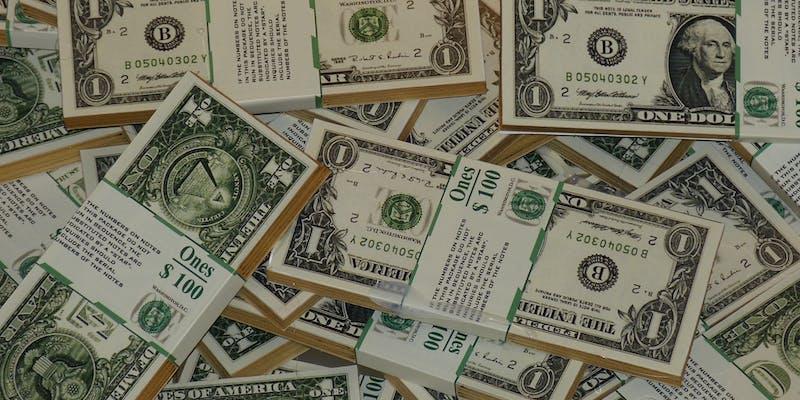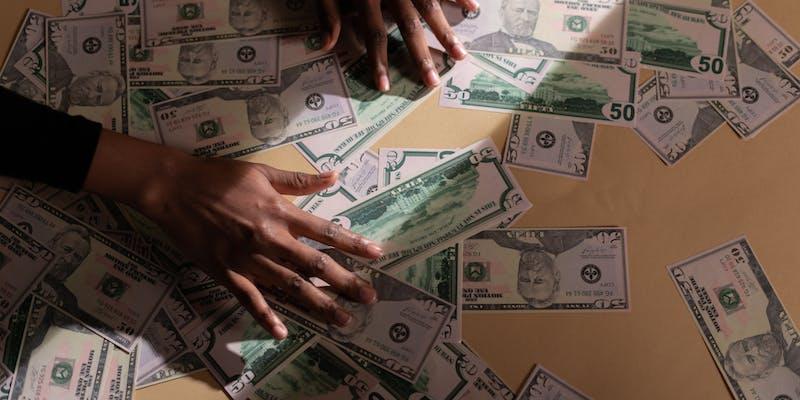A demand draft is a safe way to move money between bank accounts. Unlike checks, demand drafts can be cashed without a signature, increasing security. They deliver dependable payments for more significant transactions. Rising demand draft fraud worries prompted the Federal Reserve to act in 2005. Proposed regulations would improve victims' refund rights and make banks more liable for cashing bogus drafts. Demand drafts are secure and convenient for financial transactions despite regulatory issues.
A bank transfers cash from the drawer's account to another bank's account using a demand draft. The drawer, or client, gives the bank the money to move and the recipient's information. The drawee bank deducts the required amount from the customer's account and keeps it until the demand draft is paid.
Suppose a small business owner buys things on credit from another company. The small business owner asks for a draft demand from their bank to the supplier to complete this credit transaction, making them the drawer. As the drawee, the bank pays the supplier on behalf of the
company owner.
The supplier, now the payee, submits the demand draft to their bank for collection upon maturity. Drawee Bank releases monies to the payee, completing the transaction. Demand drafts, created for lawful telemarketing transactions, are a safe way for people and organizations to transfer monies. However, fraud concerns prompted regulatory measures to improve consumer safeguards and bank responsibility in demand draft processing, assuring their responsible usage in financial transactions.
The Procedure of Obtaining Demand Draft

A bank or financial institution makes getting a demand draft easy.
- Choose the issuing bank based on convenience and costs to start the procedure. After deciding, visit the bank office to fill out an application form with necessary information such as the payment amount, payee name, and more.
- You may need additional identity and paperwork if you are not a bank account holder. This level usually requires identity and address evidence.
- You usually have to pay fees after finishing the papers. After paying costs, the bank provides a demand draft in your name on special security paper with a draft number. The demand draft must be carefully reviewed to guarantee correctness. Make sure that the payee, payment amount, and instructions match.
- Finally, deliver the demand draft to the payee. The bank's policies and your desire determine whether this is done in person or by mail. The demand draft is a popular solution for people and organizations seeking a safe payment option.
Demand Drafts Vs. Checks
Demand drafts and checks differ in issuance, drawee, and payment management. A bank employee draws a demand draft. A check is written by a bank customer using monies from their account. The bank or its employee marks a bank draft, underlining its institutional origin. The account holder writes a check, demonstrating the personal nature of the transaction.
A key difference is payment control.
Once a demand draft is issued, the bank staff drawer cannot halt payment. Unlike a check, the account holder can stop the payment before it is cashed. A demand draft cannot be hand-delivered, unlike a cheque. Demand drafts are more accessible than checks since anybody may draw them, regardless of bank account status. Each financial transaction instrument has distinct properties and application cases.
Demand Drafts vs. Wire Transfers
Demand drafts and wire transfers are two ways to move payments, both having their uses. Demand drafts, often known as bank drafts or banker's drafts, are physical payment instruments issued by banks. Buyer-prepaid money makes it a guaranteed payment method. Demand drafts are safe and utilized for significant transactions, university fees, property acquisitions, and financial responsibilities that need justification and secure payment.
However, a wire transfer, often known as a bank transfer or EFT, includes an electronic movement of payments between bank accounts. Wire transfers transmit funds faster than demand drafts. They can settle transactions in hours or minutes, making them ideal for urgent transactions. Transaction fees apply to demand drafts and wire transactions. Demand drafts and courier delivery may incur fees from banks. Transfer costs for wire transfers vary by bank, transfer amount, and local or international transfer.
Transaction requirements determine whether to use a demand draft or wire transfer. Demand drafts are appropriate for high-value transactions and legal commitments that require guaranteed payment. Because of their speed and electronic nature, wire transfers are more adaptable and often utilized for daily transactions of lower consequence.
Demand Draft vs. Online Payments
Demand drafts and online payment methods convey money differently and have different uses. Physical bank demand drafts provide secure payment with guaranteed money. Online payment systems enable electronic transactions for numerous objectives.
One significant difference is processing time. Online payment systems allow real-time transactions to be processed quickly. Physical processing and shipping can slow demand drafts. Therefore, this speed is a significant benefit. Another difference is transaction costs. Unlike demand drafts, many online payment systems allow free transactions under specified restrictions or for particular transfers. Online payment systems are popular and convenient since they are used for e-commerce, bill payments, and peer-to-peer transfers.
Transaction requirements determine whether to use a demand draft or an online payment method. Secure transactions with legal commitments or large quantities may benefit from demand drafts. Online payment methods are fast, convenient, and typically free or cheap for various transactions.
Cleaning of Demand Draft

Demand draft clearing requires numerous procedures and varies by bank and presentation style—payees deposit demand drafts into their bank accounts. The bank sends the draft to the issuing bank for verification. The issuing bank verifies the draft's authenticity and finances. This step may entail bank correspondence and physical verification.
The effectiveness and speed of this verification procedure determine demand draft clearance time. A complete clearing cycle takes several business days. Funds are not immediately available to the payee. Demand drafts' clearing timelines vary. Therefore, payees should consider the banks.
Pricing
Obtaining a demand draft usually costs money. Banks levy an issuing fee to cover demand draft processing and administrative costs. This cost varies per bank, so customers should check with theirs.
If the demand draft must be delivered to the payee, courier fees may be added to the issue cost. Courier delivery guarantees safe and traceable delivery of the demand draft. However, this convenience may cost more. Individuals must be informed of their banks' demand draft fees, including the issue cost and additional fees for extra services. This information helps clients to make educated demand draft financial transaction decisions.



